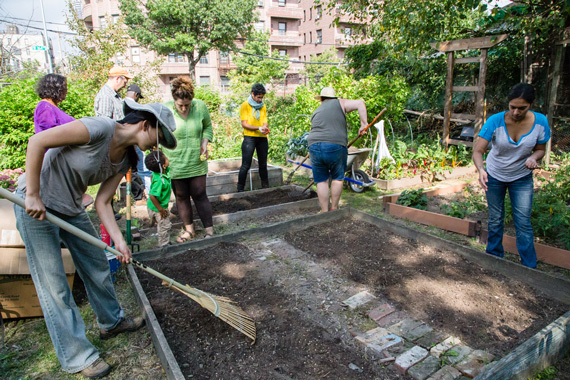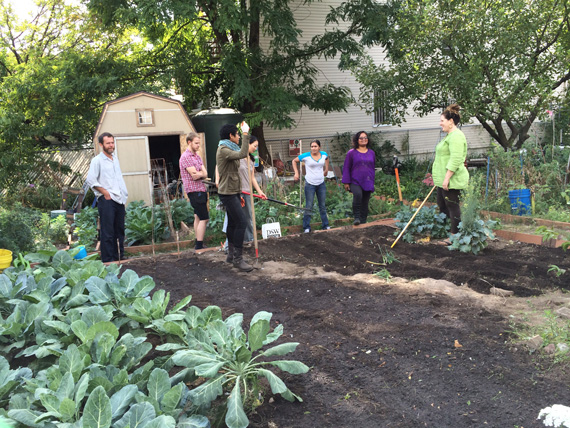Cover Crops: Sowing Seeds for the Soil
Posted in Learning Experiences on September 25 2014, by Ursula Chanse
Ursula Chanse is the Director of Bronx Green-Up and Community Horticulture and Project Director for NYC Compost Project, hosted by The New York Botanical Garden. For more information about these programs and upcoming workshops and events, visit Bronx Green-Up.
Recently, on a sunny Saturday at Taqwa Community Farm in the Highbridge neighborhood of the Bronx, just up the hill from Yankee Stadium, we worked with Farm School NYC students (a program of Just Food) to prepare several areas for planting and sowing cover crops.

As we head steadily into fall, many of our warm season vegetable crops have slowed down, and at Bronx Green-Up, we start encouraging the use of fall cover crops in the community gardens, school gardens, and urban farms in the Bronx. Cover crops, also known as green manures, are not grown to feed the gardeners, but rather to nourish the soil. They are perfect to sow after pulling out your tomatoes, peppers, corn, and beans.
Cover crops have many benefits, including protecting soil from erosion, increasing organic matter, adding nitrogen, suppressing weeds, and improving soil structure and aeration.
Winter rye and hairy vetch are two fall cover crops we have promoted over the years. Winter rye (Secale cereale) will keep growing when temperatures are over 38° F. It requires little moisture and retains its green color, even in the dead of winter. I’ve often appreciated its greenness on one of those bleak winter days.
Hairy vetch (Vicia villosa) is a hardy winter legume that decomposes rapidly when incorporated into the soil. It is a great companion to winter rye as hairy vetch is a vine that does best when it can grow along the structure of another plant. This allows good light and air circulation, promoting the growth of the vetch. Rye also has a fibrous root system that binds with the soil, while vetch’s tap root houses the nitrogen-fixing bacteria, pulls nutrients from deep in the soil, and creates passages for drainage. Finally, when turned under in early spring, the nitrogen-rich vetch assists with breaking down the carbon-rich rye. After being left to breakdown for two to three weeks, the area will be perfect for planting your spring crops.

As Farm School students broadcasted the seed and covered the areas with row cover to protect from birds and squirrels, the weekly farmers’ market brought in neighbors who selected their fresh fruits and vegetables. A resource to the local neighborhood as well as visitors citywide, students commuted from across the city this September for hands-on learning and to make a contribution to the workings of this community farm.

